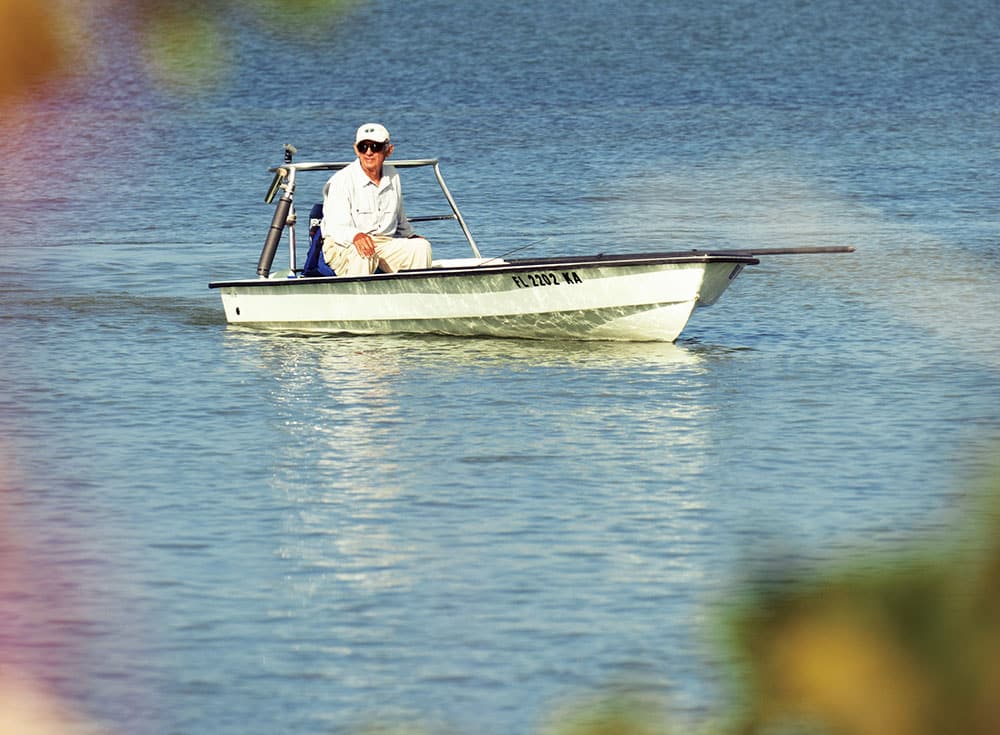The world of saltwater fly-fishing has spawned an interesting cast of characters over the years. Each has brought unique talents that he shares with us all. Names like Lefty Kreh and Flip Pallot come immediately to mind. Lefty’s encyclopedic knowledge and ability to teach and make people laugh and Flip’s experience and poetic narratives all have inspired many of us to fly-fish today. There are so many more individuals who have contributed to our sport, and they all have fascinating stories, but I can assure you, few stories are more unique than that of the man who changed the way we fight fish.
Seeing a free-jumping tarpon silhouetted behind Ted Juracsik’s head in the early morning sun was surreal. I remember the first time I held and admired a Billy Pate reel and read the engraving, By Ted Juracsik. I didn’t know who he was but figured he must be special if his name was scrawled on this reel. Shortly after, I learned who he was as he poled Flip Pallot through the mangroves of the ’Glades in an episode of the Walker’s Cay Chronicles. I never would have guessed that, 20 years later, I’d be sharing a skiff with him.
“You get excited, don’t you?” he asked as I announced the presence of every tarpon that rolled within eyesight. “Tarpon make me stupid!” I replied. He smiled.
As the morning progressed, I watched him meticulously cover the water. While working one area, I saw a tarpon roll and called it out. He quickly laid the fly out just beyond the disturbance and started counting the fly down before starting his retrieve. Moments later, his line came tight and the water erupted as nearly a hundred pounds of silver took to the air. I watched in awe as he calmly played the fish with a smile on his face as he admired his latest contribution to fly-fishing, the Tibor Signature Series reel.
So what does a person like myself do when he is fishing with a man who has been a part of and contributed so much to the world of fly-fishing for the last 40 years? Well, I asked a lot of damn questions. I recorded the conversation for the purpose of sharing his story but then realized nobody can tell another person’s story as well as he can. So — I decided to let him tell you his story, in his own words.
When did you come to the States? I was 18 and fought in the revolution in Hungary against the Russians the year before. I escaped and went to Austria and stayed there for a month or so in a refugee camp. Then I came to the States in 1957 and wound up in New Jersey in a refugee camp. Back then, when you came to this country, somebody had to sign you up and take care of you until you could speak English and take care of yourself. So this Catholic orphanage in Brooklyn, the St. Vincent Home, took me in. That started my new life in the U.S. I didn’t have nobody. I had to leave my father, mother and sister behind. I had to flee because I didn’t want to be hung. I was lucky to escape because a lot of guys they picked up were executed or just disappeared.
How did you end up fighting in the revolution? Were you drafted or did you just feel the need to fight? The college students started the revolution because the Communists were there and were terrible. That’s why I hate Communists so bad. I can’t understand this thing with this country and China. Why would anyone want to do business with Communists? They haul their people away if they say anything; there is no freedom. So the students start marching with flags and the secret police start shooting at them, so they start to throw rocks and things, and that is how it started. The soldiers wouldn’t shoot at students but the secret police would. When all the soldiers went home, we broke into the armory, got rifles, machine guns and started shooting back at the secret police. Pretty soon, there’s no more secret police.
So, we were great; the Russians, they pulled out of the country. And we were happy for a month and a half because we got the country back. Then all of a sudden, the Russians came back in with big force and killed everybody and we could not fight against tanks and things like that. So the revolution was over and the secret police came out of hiding and started picking up people who were in the revolution and hauled them away.
Wow. I had no idea that you fled for your life. I guess I’ve always thought of people wanting to come to the United States for a better life. When I was a kid, we always thought America was a country where every sidewalk was paved with gold. Everybody’s dream was to go to America, the greatest country in the world.
Did you come through Ellis Island by boat? No. By aeroplane. After Austria, they took us to Germany by train and we signed up to come to the U.S. I had never been on an aeroplane, and all of a sudden the translator says we’re going to have to land in Iceland because one of the motors quit and they have a problem with the other motor. We were kind of flying sideways. They told us if we crash-land to take the pens and pencils out of our pockets and put the pillow over our heads. They told us if we land on the water to swim away from the aeroplane because it sinks. I looked out the window and all I saw was ice. I had no warm clothes and thought that wasn’t going to be good. Luckily we made it to this Air Force aeroport in Iceland. I’ve never been that cold in my life. They took us in trucks to the barracks until they fixed the plane. Then we came here and landed in New Jersey.
How did you end up becoming a machinist? Is that the first job you had? In those days in Europe, education was very different. We went to school till we were 14; then you had to decide a trade. I wanted to be a jet aeroplane mechanic but there were way too many kids who wanted to do that, so my next thing was to fix equipment and be a tool and die maker. So, at 14 I started my apprenticeship that lasted four years. I picked it up pretty fast and became a master in the factory by 17.
Was it difficult to find work? Well, don’t forget, this country had a horrible habit of not using the metric system. But what happened is, when I was staying in the orphanage, I was a decent soccer player. On Sunday afternoons we would play under the Brooklyn Bridge. This guy came over to talk to me because they had a team, but I couldn’t understand what he was saying because I didn’t speak English. The following week, he brought an interpreter and asked me if I would like to play for their team. I couldn’t leave the orphanage because I couldn’t take care of myself yet because I didn’t have a job. See, back then, we didn’t know anything about welfare.
The good old days, huh? Yeah. So he said they could give me a job at the watch factory if I would play. I went to the monsignor and said they were going to give me a job. They showed me what to do. I knew how to run all the machines, but couldn’t because I didn’t speak English and you had that crazy system — not metric.
One day, we went onto Long Island to play a German team, and it had some Hungarian players who asked me to come play with them. I didn’t have any Hungarians on the factory team and they said the guy who sponsors the team owns a plastic factory and could give me work. So I moved out of there and went to Long Island to play for them. That’s when I started learning English. I was there for about a year, and a good friend from California called and said they had a good team out there and they paid you to play. You would get $30 a game and $20 a goal. I told him I couldn’t because I didn’t have any money. So, they sent me a plane ticket and I went to California and played there for a season. After that I came back to Long Island and, by then, spoke decent English and learned how to convert the measurements. I went to work for a tool and die company working in my trade and have been doing it ever since.
What was your first impression of the United States? You might think this is funny but it is not. When I was in the orphanage, about the fourth or fifth day, I went outside. I don’t speak English and was scared because, if I got lost, I wouldn’t know how to get back. So I go out on the street to look at this country and I find on the sidewalk six or eight Coke bottles. In Hungary, bottles were very expensive. When you would go to get vinegar or milk, you would bring your own bottle. So I picked up these bottles and found a sack to put them in and put them under my bed. I say to myself, I’m rich. I could not believe that people would throw those bottles away. I told my Hungarian friends and nobody believed. That was one of the most incredible things I had ever seen. That was when I realized how rich this country is.
We all know you as a fisherman. Did you start fishing here or was it something you did as a child in Hungary? All the time I fished in the Danube River for carp and catfish near our home. It was interesting when, in the Second World War, the Allies came dropping bombs — you know we were on the Germans’ side. The planes came, bombed the bridges and missed a lot, which made giant craters right next to the river, and when we had floods, these craters filled up with water and became lakes. I did lots of fishing in these lakes. My dad punished me a lot because I skipped school a lot to go fishing.
How did you get into the fly reel business? Well, I had nobody here and I wanted to start a family. So in 1959, I got married. In 1960, we had a daughter and in 1962, we had a son. When I got married, I got a third job and figured out real quick, if I was to get ahead, I would have to start my own business. I had an opportunity to make some tools for some people, but I did not have any machines and we were living with my in-laws. So I asked my father-in-law if I could buy some machines and put them in the garage. He said it would be all right, so I quit my third job and would come home and work at night making things for other people. That’s how I got started. When things got better, I quit my second job and my regular job. After a few years, I started doing really well.
By then, my in-laws had moved to Florida, and I had a guy working for me. My wife and my daughter, Marianne, went to visit Florida and we saw this incredible fishing. I had fished some in Long Island with my brothers-in-law; we did a lot of surf-casting back then. After visiting Florida I said to myself, I’ve got to somehow move here because that is where it is at.
So one winter, while I was visiting Florida, I met Tony Lay. He was fishing one of the bridges for snook, and we became friends. I kept contact with him. Then in ’72 or so I came down to visit again and he had already moved to the Keys and gone to work for World Wide Sportsman, and that is where I met Billy Pate. One time, Billy came in and was complaining about his reel and how he had lost a big tarpon because his drag wouldn’t work right. Tony told Billy that I would make him some reels that he wouldn’t have any trouble with, and Billy says, “Really, you make fly reels?” and I said, well, let me see what you’ve got. He had Fin-Nor anti-reverse, so I took it apart and I could see right away what the problem was. So I said, I can make you a couple of reels. I went home and drew it up and started making them. Everything back then was handmade because we didn’t have any CNC equipment. I made these two reels in my spare time and went back to Florida the next year to fish with Tony, and gave Billy the reels. He liked them right away. He asked me if I could make him some more so he could sell them in his store. I told him I couldn’t make him two or 10, but I could make a hundred. And that is how the Billy Pate reel started.
You didn’t fly-fish then, did you? No. Billy asked me what he owed me for the two reels and I told him nothing, just teach me fly-fishing. I stayed by his house and he taught me how to cast, and he took me to Buchanan Bank [Islamorada, Florida]. I couldn’t cast, so he hooked up a tarpon and handed me the rod so I could feel what it is all about. That was the first fish I ever caught on a reel that I made. After that I knew I had to figure this out because it was pretty cool.
By the time you learned to cast, were you just tarpon fishing? No. Remember, I wasn’t living in Florida then. I went up North and took a rod up with me, and I made a couple of reels for myself and I started striper fishing. It opened a whole new perspective of fishing for me because fly-fishing is a really cool way to catch fish. But, I never forget, if you are just going to fly-fish, you miss a lot of opportunities.
How much have your reels changed over the years? The only thing that has changed is we make them lighter. And, the reel foot — the original was stainless steel and it’s aluminum now. Other than that, it is still the same everything. The anti-reverse reels, that is. Here, let me show you. This reel is the first or second I built for Billy. My good friend John Donnell went to the auction that Billy’s wife had and bought this as a gift for me.
Wow, you are kidding me. This is one of the original reels? Yes. And I’m not sure, but they made it sound like he was still using it after all these years. Look how smooth the drag still is.
So tell me about the Tibor and Tibor Signature Series reels. Why did you introduce them? The Billy Pate seems so flawless. Well, I did the Tibor reels because the direct-drive Billy Pate model had the drag adjustment on the side that the handle would turn and you could not adjust when the fish was running line out. It did not matter on the anti-reverse because the handle doesn’t spin. The direct-drive reel does though, so that is why I made the Tibor. The Signature Series is a lighter reel and has a sealed drag. It is a better design because, even though the drag is sealed, it can still be taken apart to maintain or work on it.
As I sat there holding and admiring the first Billy Pate reel, the machine marks still visible some 40 years later, I came to the realization that I was holding a true piece of the history of fly-fishing — the reel that made it possible to tame the largest and wildest of fish. I then looked across the room to the man sitting in the chair and didn’t have a thing to say that could ever compare to the story I had just heard.
It was more than clear that Ted Juracsik was a man who is truly happy with who, what and where he is. A man who came to this country with nothing but the clothes on his back and who truly believes in and lives by the words “Made in the USA.”
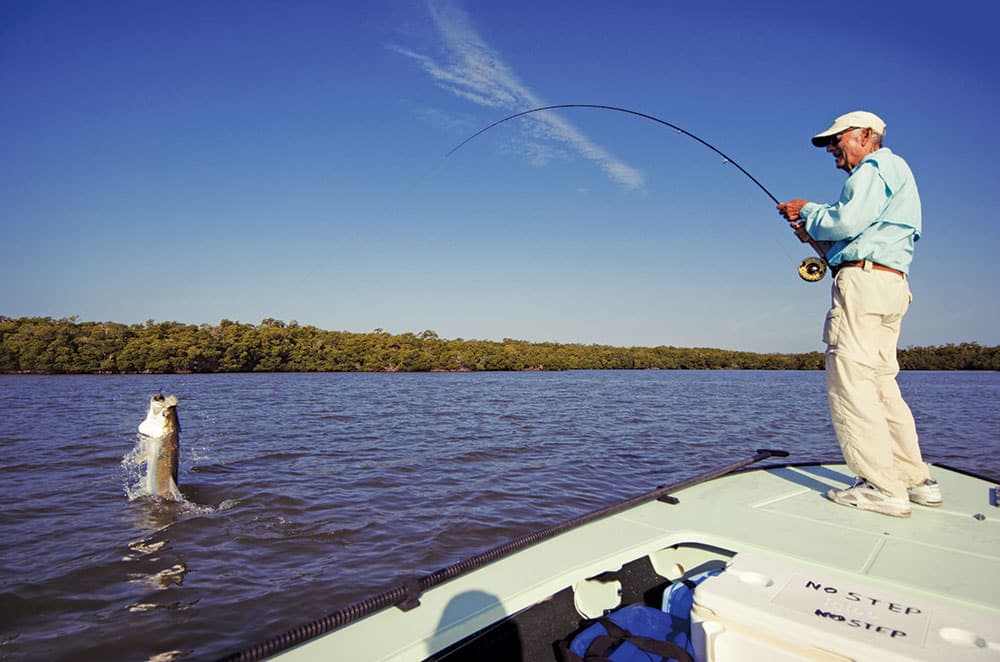
The History of Ted Juracsik
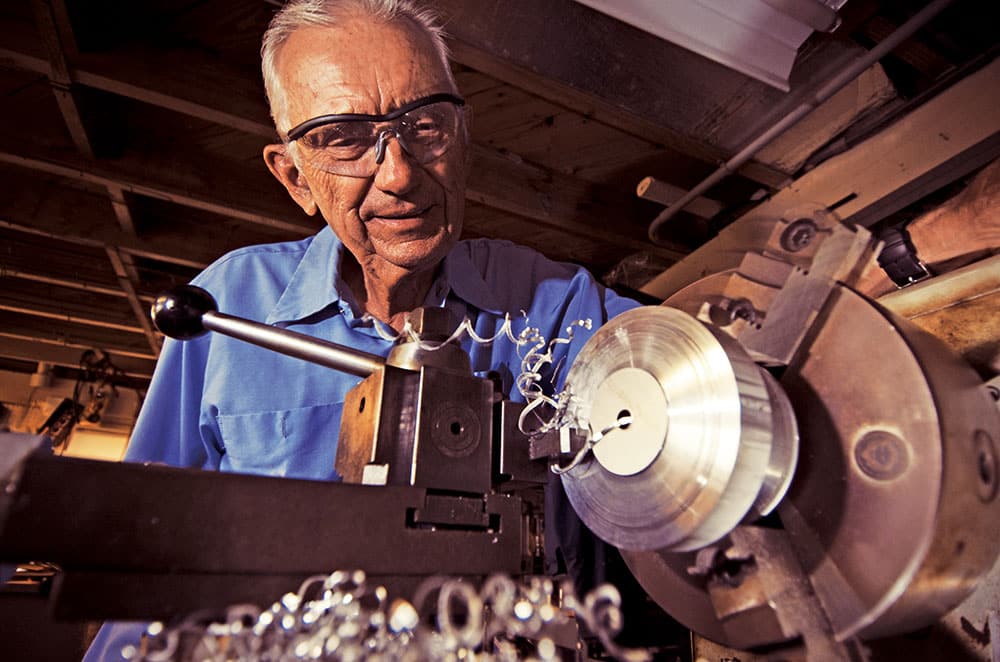
The History of Ted Juracsik
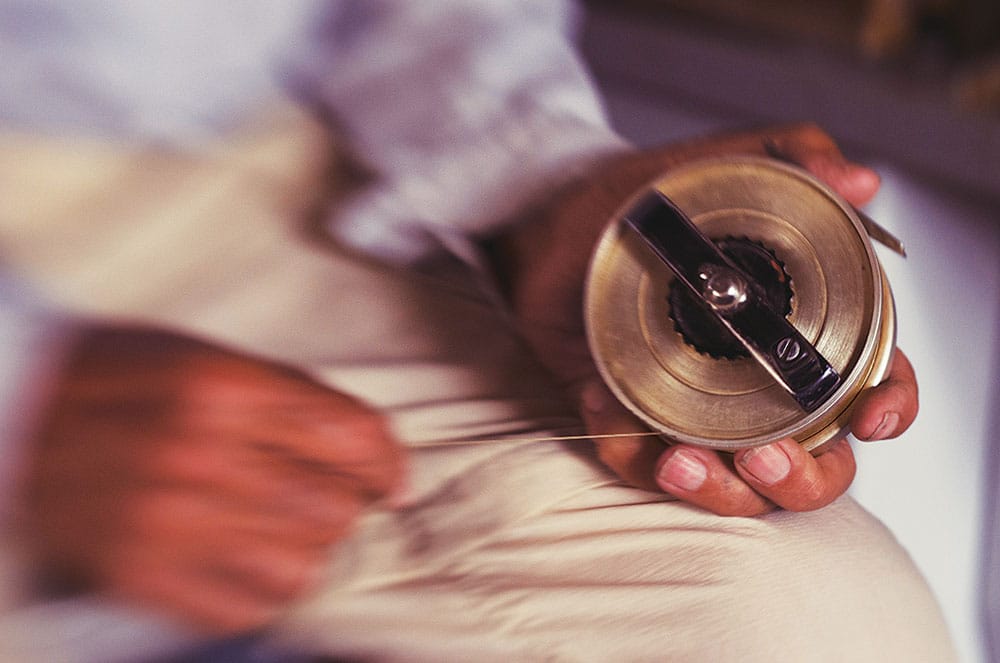
The History of Ted Juracsik
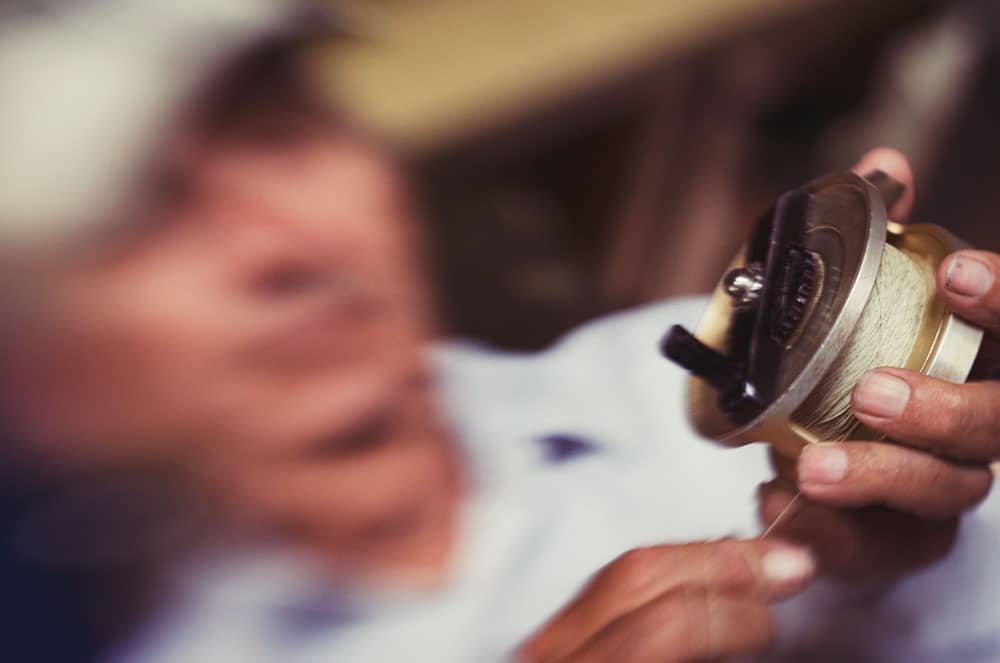
The History of Ted Juracsik
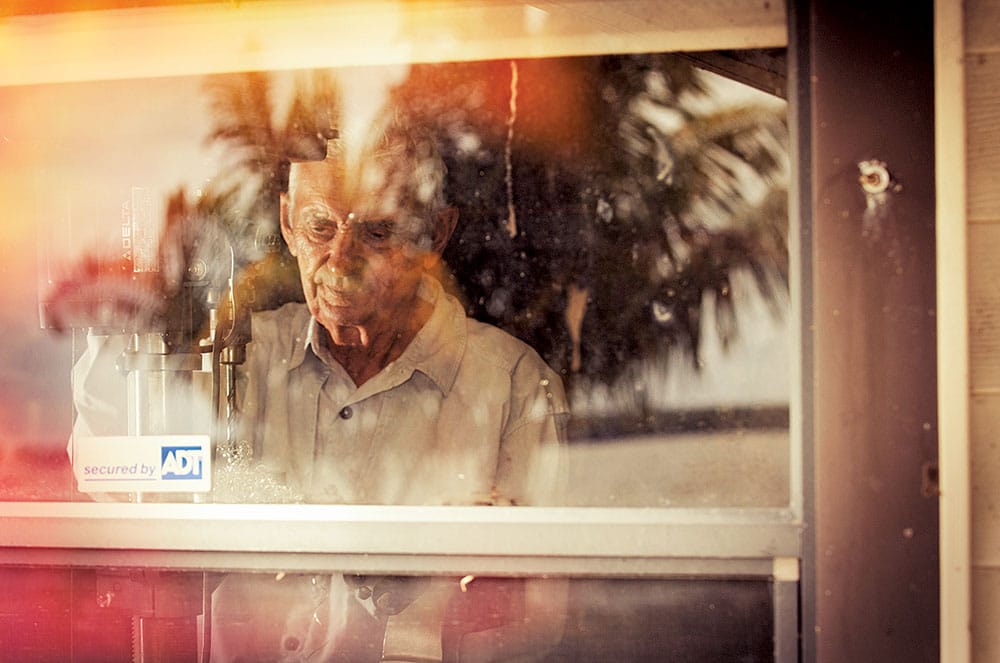
The History of Ted Juracsik
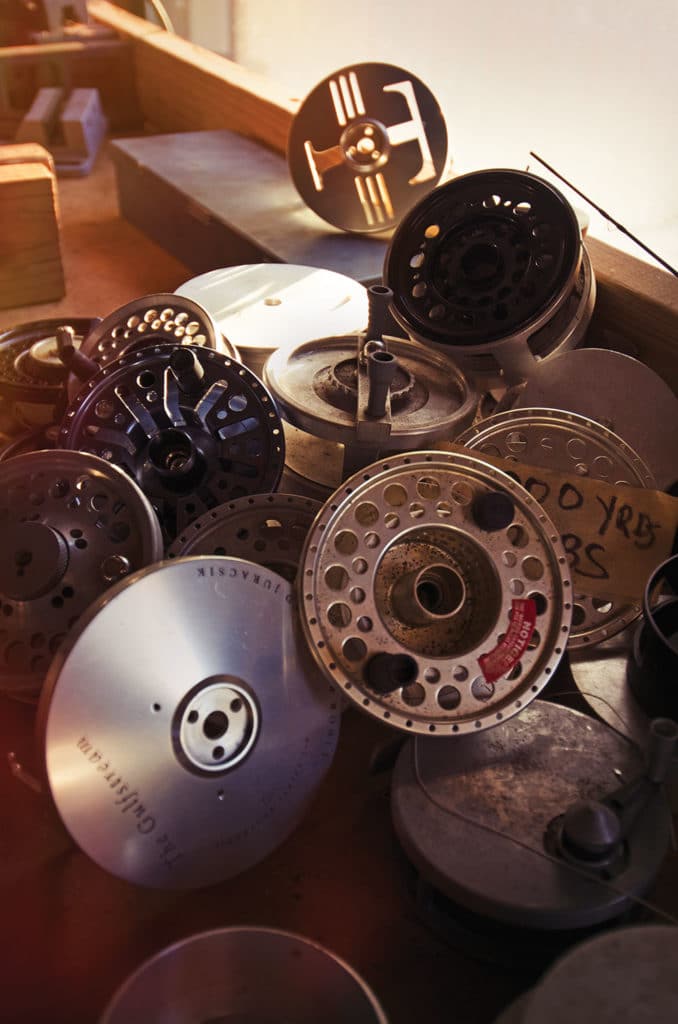
The History of Ted Juracsik
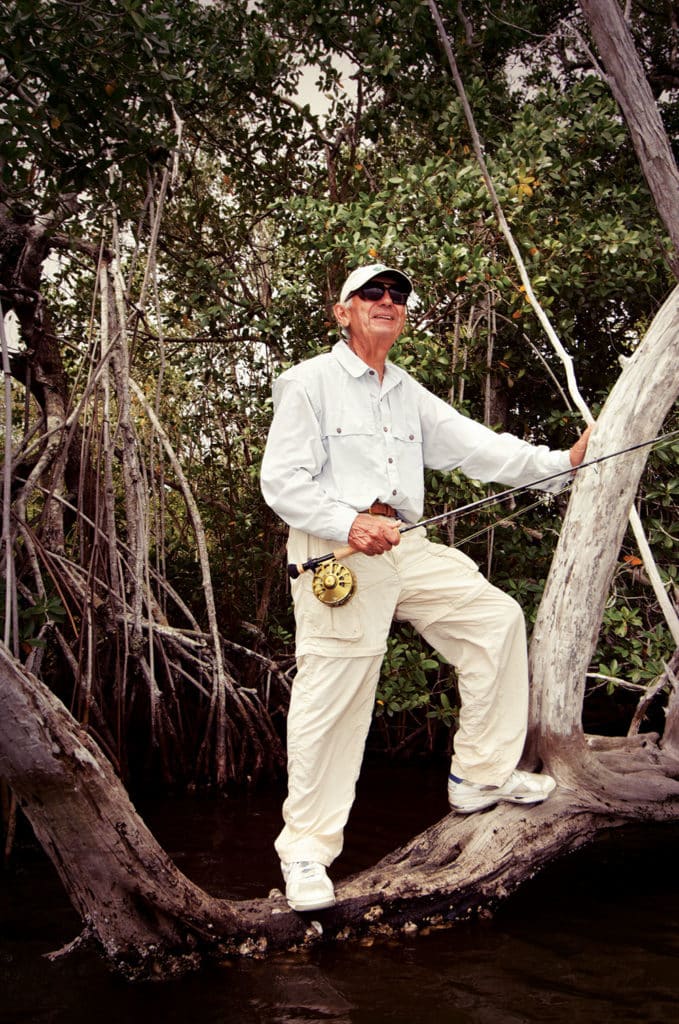
The History of Ted Juracsik
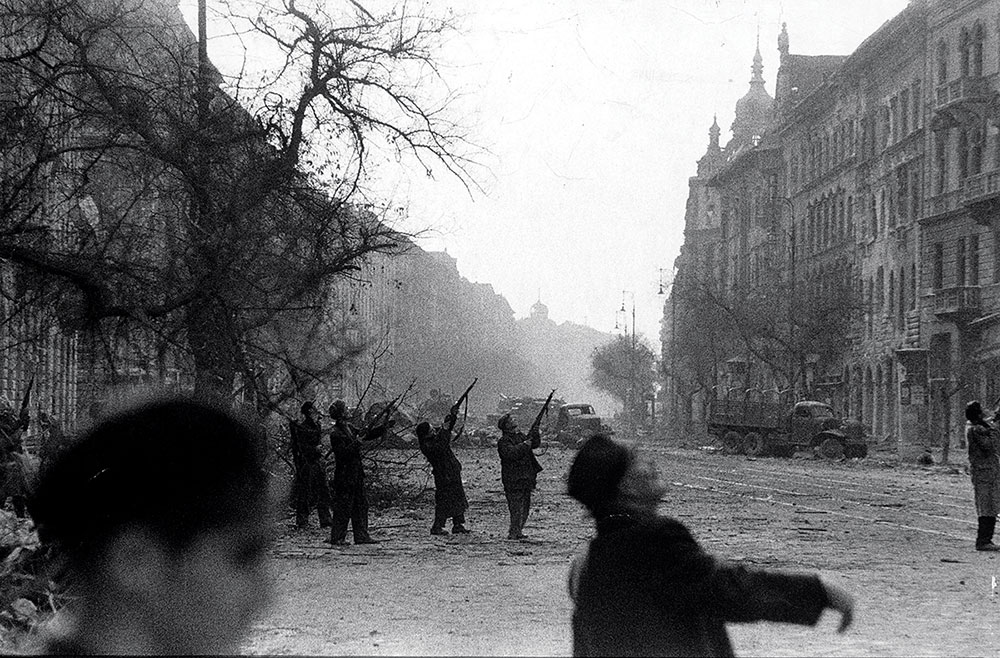
The History of Ted Juracsik
Around this time, Juracsik was 17 years old and was fighting against the Russians in the revolution. As the situation worsened, he knew that he must do whatever necessary to escape.
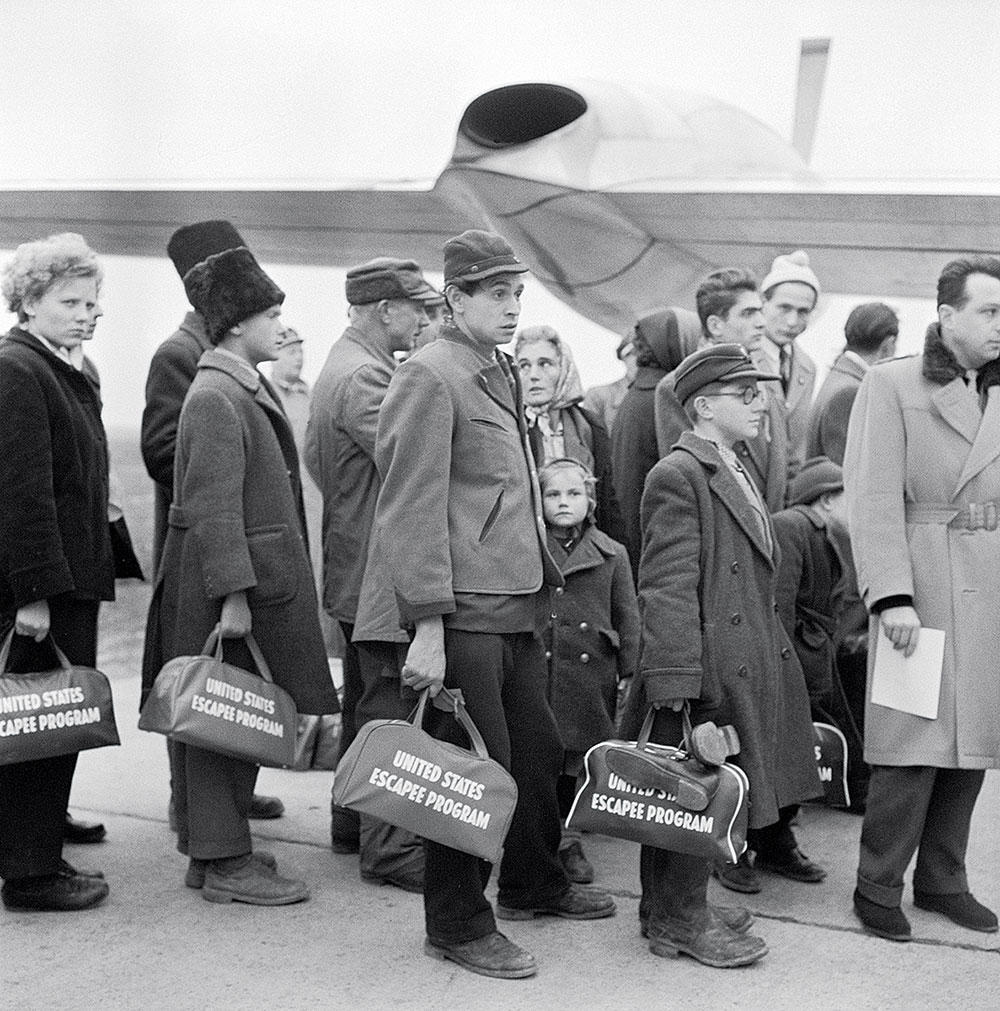
The History of Ted Juracsik
The first step to a safe escape was getting out of Hungary. Juracsik found crossing into Austria was his safest bet. He stayed there for a month or so at a refugee camp.
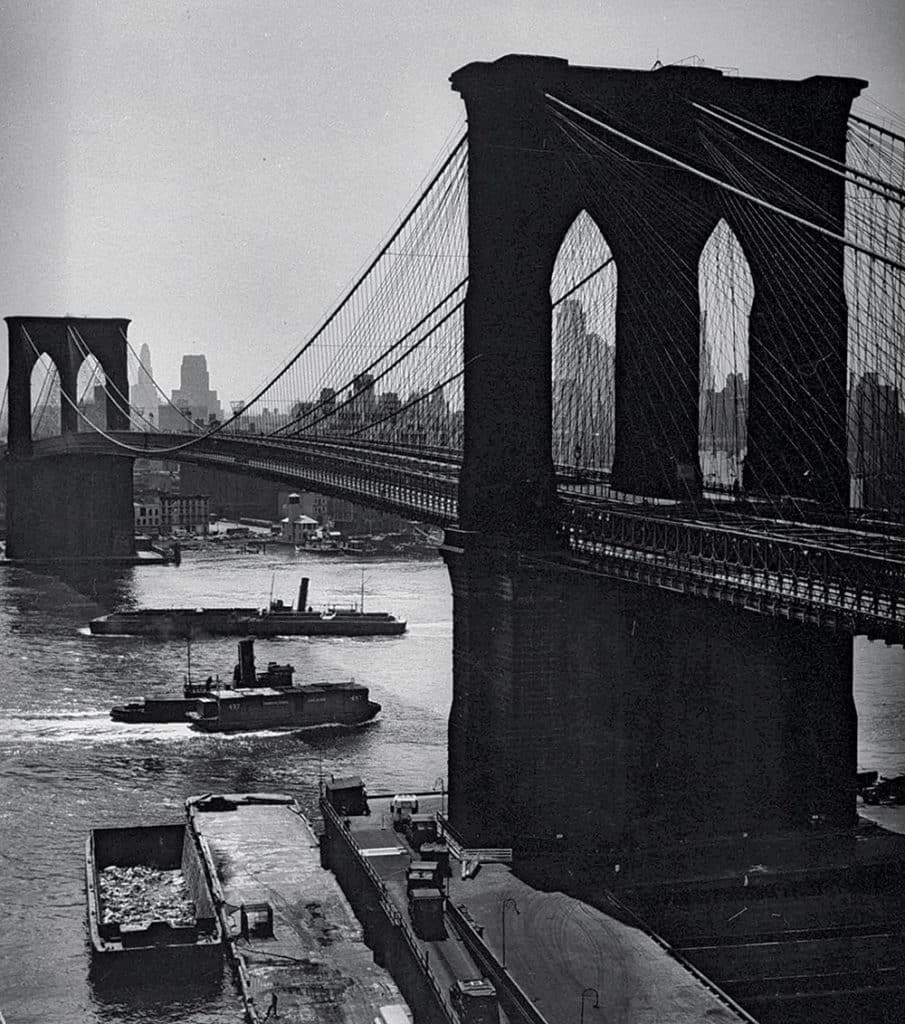
The History of Ted Juracsik
Finally, at the age of 18, Juracsik made it to the States and was taken in by the St. Vincent Home, a Catholic orphanage in Brooklyn, New York. He left his whole family and was all alone.
